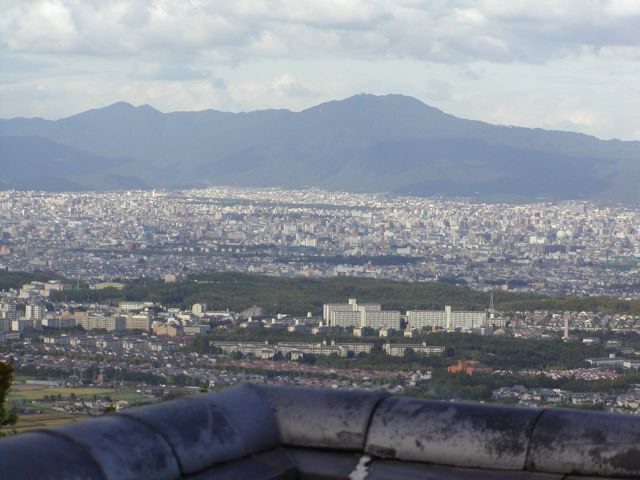
It is located on the hillside on the northern continuation of the Zentenji precinct. In the first year of Seibo (1074), Minamoto Jōjin was founded as a sōshōin. The name was later changed to Sanjōji-ji, as the Nenbutsu Dojo of the Jodo sect, Nishiyama-jōjin (), and the successive mountain lines behind it resembled the Buddhist temple Sanjōki. It flourished as the Imperial Court, which also served as the four schools of Tendai, Shingon, Ritsu, and Pure Land, but declined after the Onin Rebellion. The Huatai Temple enshrines Nishiyama Jinjin and Utsunomiya Yoritsuna (Rōshū), who was involved in the formation of Hyakunin Isshu. The view of the city in the northeast direction from the front of the main hall is majestic and stunning. It has been said to be a bird's-eye view of the Seven Castles of the Two Great Buddhas since ancient times.
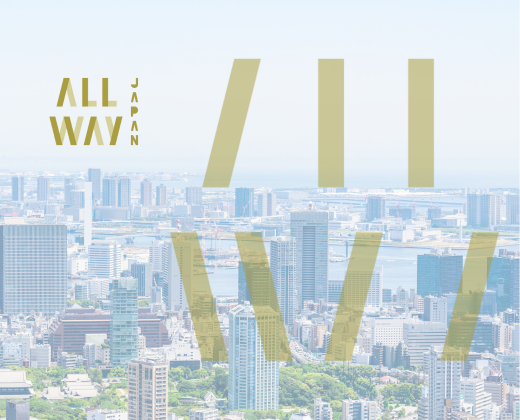
It is said to have been founded in the Imperial Court of Justice (718) by Emperor Yuan Zhengzheng. He buried the scriptures on the four sides of the capital at the time of Heian, for the sake of Ojo Zhenin, but he received the name of Mount Nishiiwakura as his one temple. It is known as a famous temple in the late Heian period, and is also depicted in the "Konjō-sōtōshō". Although it was in the military fire during the Onin War, the present-day main temple, Kaizan-dō, etc., was rebuilt by the donation of Kōjō-in (1684-88).

In the third year of Enryaku (784), it was founded by an empress from the Fujiwara clan to exclude the inconvenience of visiting the shrine to the Kasugataisha of the Ushigami in Nara. In the third year of Jiashō (850), a magnificent shrine was built by Emperor Buntoku. The shrine is made of Kasuga, which is made of the same cypress skin as the Kasuga Taisha Shrine. The current main shrine, with four buildings, was built by Emperor Go-Mizuo during the Kei'an year (1648-52). There is also a koisawa pond in the precincts, which is somewhat similar to Sarusawa Pond.
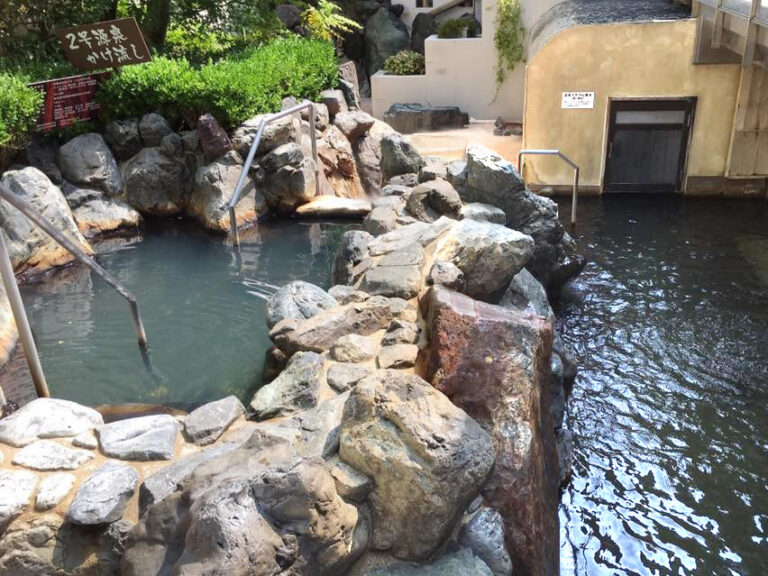
It boasts a natural hot spring that draining two kinds of sources without warming water. The two sources are "Ninoyu", which has a well-warmed and refreshing feel, and "Ichinoyu", a cold hot spring that is gentle on the skin and happy in summer. It is recommended that you enjoy a luxury that increases the effect by entering the two sources alternately. There is also a rock bath for both sexes to enjoy, and you can relax and relax.
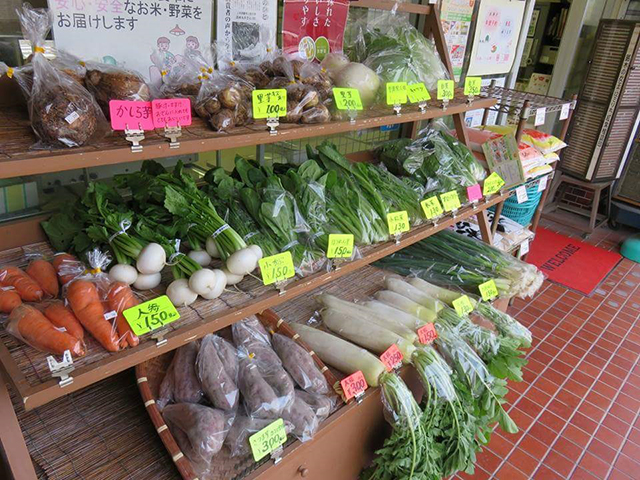
"Real taste" is sold under the motto of fresh, safe, and secure. The seasonal Kyoto bamboo shoots, Tsukahara, and the morning digging stalagmites carefully raised in Kohara are the best items. Rice and seasonal vegetables are placed, so let's stop by.

The famous wheat rice cake [Mugitemochi] 290 yen each is made of red bean paste cooked with kunugi firewood wrapped in a soft rice cake in half a moon and sprinkled with kina flour, about the size of a palm. In the old days, he said, two rice cakes could be exchanged for five goons on a peasant's snacking. There is also 220 yen per mini. From December to February, you can eat nyumen and white miso zoni in the room at the back of the store.
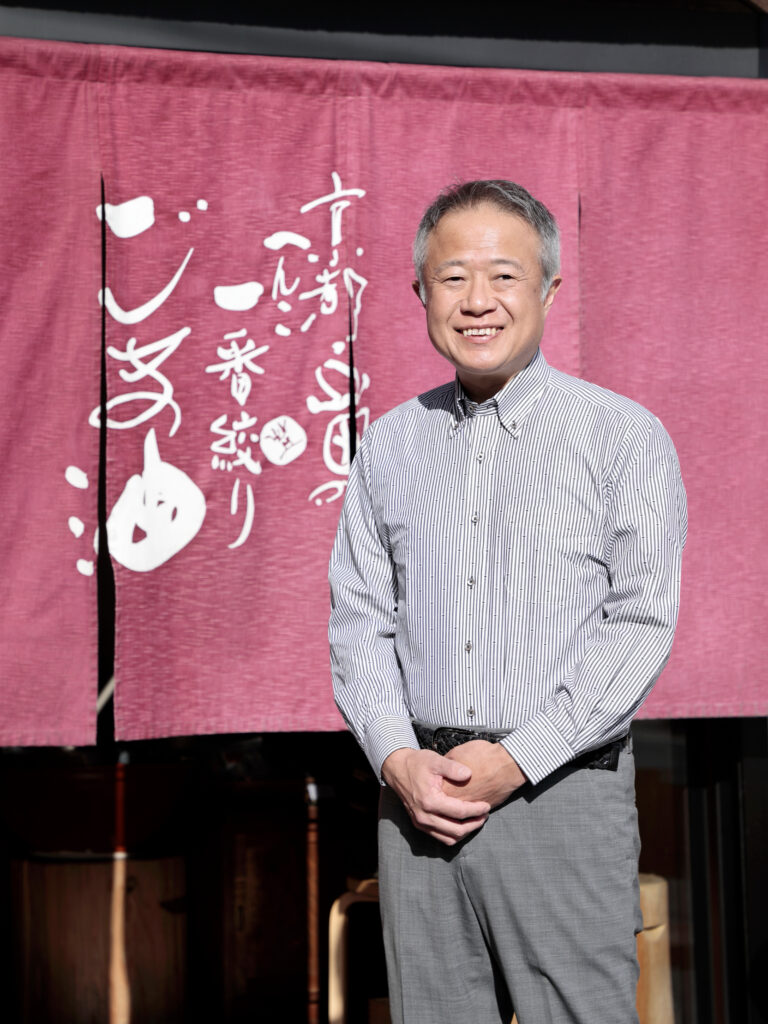
Yamada Refinery is "Yeah Montsukote, delicious Monkazura Akan!" based on the creed of, he has been making delicious sesame oil without additives by hand, which has been stubbornly protected for three generations. The first president, under the philosophy of "making food for the people of the world," started the production of sesame oil in Katsura in 1934. It also operates two directly managed stores (Katsura's restaurant, Piccolomond Yamada and Karumaru Oike's Gomro Salon). The most squeezed white sesame oil is 540 yen for 140g.

It was originally built in the early Edo period as a villa for the Hachijo Miyas. It spends a lot of years to complete, and the 69,000-square-meter site, surrounded by bamboo shoots, is equipped with a garden pond, and has teas and shoin houses such as Shokokitei and Chokantei. The comprehensive beauty of gardens and architecture is known worldwide. Permission is allowed. Journey time about one hour.
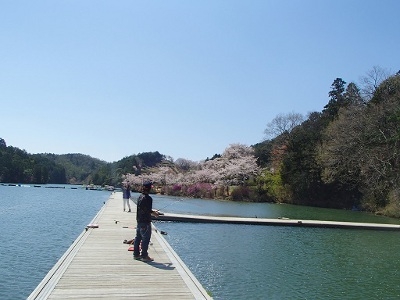
The management fishing spot at the northern end of the Shobu Valley Pond along the Arashiyama and Kaohsiung Parkway. There is a pier with a total length of 150m and a width of 2.5m. There are also events where you can enjoy sports fishing, even for beginners with a resident instructor.
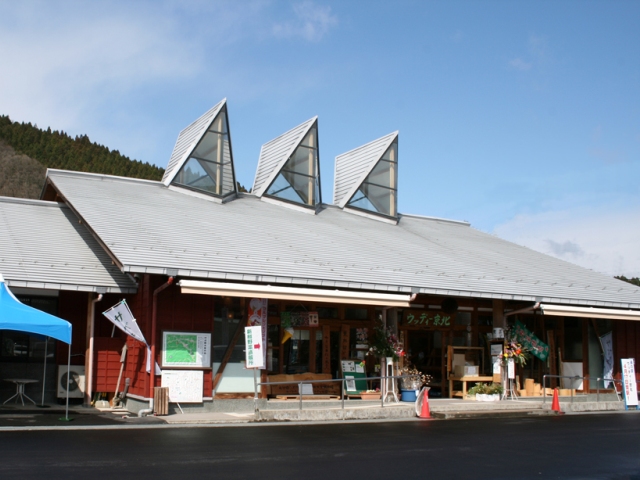
Shuzan Kaido (National Route 162) is a road that runs from Kyoto Omuro-Ninna-ji Temple to Shuzan, Keihoku-cho. A long time ago, a woman from the Umegahata, who was called the field Uba, put ladders, saddles and other items on her head, and then sold items from this highway. Along the highway are Kaohsiung, Makio, and Tsugao Miao, which have excellent autumn leaves, and as you go further, you can enjoy the scenery of the mountain village through the beautiful forest of Kitayama cedar. In the Nakagawa village called Kitayama Suginosato, you can also see the sight of standing and dried Kitayama log. Further north, through the Kasa Tunnel, it is a tree and a clear stream of Kyoto Kita. There are spots such as the roadside station Woody Keihoku in the center of Shushan, and there are also historical heritage sites such as the Jōshō-ji Temple, which is famous for its cherry blossoms.










